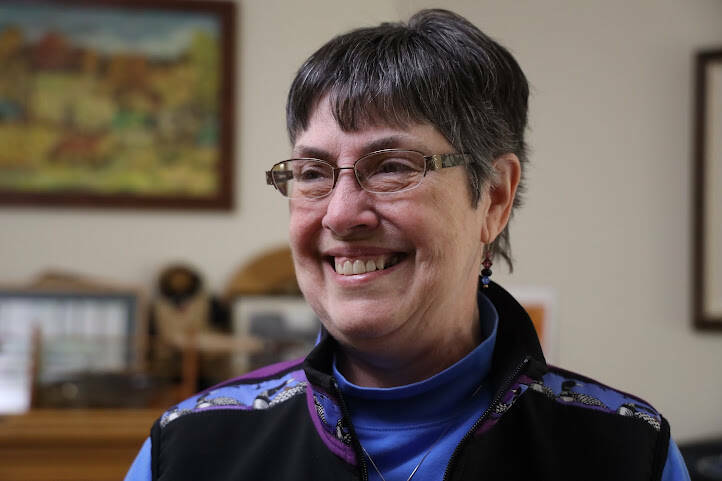“The Board of Education’s primary goal is to provide each student with an education of the highest quality in keeping with his/her capacity to learn. This goal shall be the basic factor motivating the Board of Education’s execution of its powers and duties.”
According to the Juneau Board of Education Bylaw 9000, my first duty as a school board member is to provide the highest quality education to each student. That is what motivates my decisions.
This fall when the school board began to examine academic outcomes and reorganization, I was stunned to realize how small each high school teaching faculty had become. My son graduated from JDHS in 2008 when there were more than 75 regular classroom teachers providing scheduled classes. Today there are 46 teachers between our two high schools. I was shocked to learn that each school has 100 or more students taking online classes each semester to earn the credits they want/need to graduate. Significant numbers of other students, some only sophomores, have “free periods” because there are no classes available for them to take.
When schools were closed during the pandemic, the message from students and parents was loud and clear: Students need to be with teachers and peers in an interactive learning environment, not staring into a screen.
Two variables exist for scheduling classes. One is the number of students who want/need the class. The other is sufficient faculty to offer the class.
These are the essential elements of the consolidation plan that was passed (Feb. 22). There would be one high school with all students and staff housed, based on building capacity, in the JDHS building and one middle school, grades 7 and 8, housed in the Thunder Mountain building.
By consolidating both high schools’ students and faculty in one building, we can begin to recapture the rich comprehensive high school program that our community and students have a right to expect.
Middle school students also deserve their own building that is fully focused on the social, emotional, and academic needs of seventh and eighth graders who need access to robust sports and activities options.
Sixth graders were moved to the elementary in a K-6 model. There is substantial research indicating that sixth graders placed in an elementary school setting make more academic progress than those placed in a middle school setting.
The board has heard from an organized group whose goal is keeping Thunder Mountain High School open as a 9-12 high school. This goal has been wrapped in their multipurpose “7-12 model” that improves nothing, and is potentially extremely detrimental academically, developmentally, socially and emotionally for middle school students who need their own school.
The 7-12 model fails to address the existing and progressively declining academic realities of having two high schools. It ignores the community’s interests and the board’s duty to provide the most comprehensive curriculum possible to all high school students.
This model also disrupts the lives of all Juneau middle school students and their parents, whose 12- to 14-year-old children would be housed in buildings with high school juniors and seniors. This strips middle school students of their own program and school as all middle school students would be placed in a high school setting at either TM or JD.
Middle school students need their own space fully focused on the best environment for 7th and 8th graders. They deserve unfettered access to their building and gym for middle school activities and sports, not competing for time and space with high school activities and sports in a high school building.
On Thursday night, four school board members voted to suspend the rules to allow a board member to place her “new idea” on the agenda. Today we were treated to two new and different plans that bring a new level of “fruit basket upset” to the district’s ability to plan for the future. They offer many options, but no option to consolidate the high schools.
With Juneau’s school enrollment and district revenue declining, the board made a difficult choice to consolidate the two high schools and the two middle schools. We maintained all of our neighborhood elementary schools as K-6 schools. This model is fiscally viable and without it, we will be balancing our budget with even more staff layoffs.
Yes, this is about a balanced budget, and our consolidations accomplish that, but our restructuring model also reflects my primary duty as a school board member “to provide each student with an education of the highest quality in keeping with his/her capacity to learn.”
The next Board of Education meeting is Tuesday, March 12 at 6 p.m. in the JDHS auditorium. Documents for the meeting can be viewed at www.juneauschools.org on the calendar section of the homepage. Board members can be emailed at schoolboard@juneauschools.org.
• Deedie Sorensen is president of the Juneau Board of Education. This column represents her personal views, not the official position of the board.

